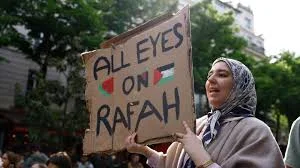-
 Platforms: Instagram, Twitter/X, TikTok.
Platforms: Instagram, Twitter/X, TikTok.
Tactics: Viral sharing of the video of George Floyd’s murder, mass use of hashtags like #BlackLivesMatter, organizing protests, and “Blackout Tuesday,” where millions posted black squares to show solidarity. Millions of posts helped turn local outrage into global protests, making it one of the largest protest movements in U.S. history. -
 Platforms: Twitter/X, Instagram, Facebook, WhatsApp
Platforms: Twitter/X, Instagram, Facebook, WhatsApp
Tactics: Farmers and supporters used hashtags like #FarmersProtest, #StandWithFarmers, and #SpeakUpForFarmers to keep the topic trending and pressure the Indian government. Influencers and even Rihanna and Greta Thunberg amplified it globally. The Indian government tried to control the narrative, and Twitter was asked to block protest accounts. -
 Platforms: Instagram, WhatsApp, Telegram, Twitter/X
Platforms: Instagram, WhatsApp, Telegram, Twitter/X
Tactics: Protesters filmed and uploaded videos of women removing or burning hijabs after Mahsa Amini died in morality-police custody. Iran tried to shut down Instagram and WhatsApp nationwide to stop people from organizing and stop footage from leaking out. -
 Platforms: Twitter/X, TikTok, Telegram, Instagram. Tactics: When Russia invaded Ukraine in 2022, Ukrainians and global supporters used social media to share real-time videos, raise funds, and fight misinformation. TikTok became known as the “first TikTok war,” with civilians posting updates faster than news outlets. Hashtags like #StandWithUkraine went viral, shaping global opinion, pressuring governments, and raising millions for refugees and humanitarian aid.
Platforms: Twitter/X, TikTok, Telegram, Instagram. Tactics: When Russia invaded Ukraine in 2022, Ukrainians and global supporters used social media to share real-time videos, raise funds, and fight misinformation. TikTok became known as the “first TikTok war,” with civilians posting updates faster than news outlets. Hashtags like #StandWithUkraine went viral, shaping global opinion, pressuring governments, and raising millions for refugees and humanitarian aid. -
 Platforms: Instagram, TikTok, X
Platforms: Instagram, TikTok, X
Tactics: Viral images, including an AI-generated graphic with the words “All Eyes on Rafah,” spread tens of millions of times to call for a Gaza ceasefire and draw attention to civilian casualties. Content also became extremely polarized, and both pro-Palestinian and pro-Israel narratives fought for visibility, accusing platforms of bias